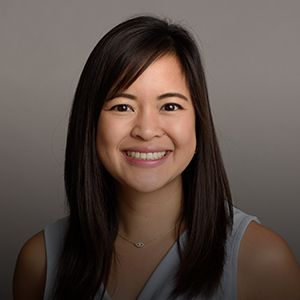
Parents with myopia are already familiar with the symptoms of not seeing clearly in the distance and relying on glasses or contacts to have their vision corrected. The term myopia is the medical term to describe nearsightedness, which is a common vision condition that usually develops in childhood as a result of the eye elongating at a faster rate than normal. Once a child becomes myopic, their vision typically deteriorates every 6-12 months, requiring stronger prescriptions after each eye exam. Most myopic children tend to stabilize by their late teens and early 20’s.
It has been well-studied that any of these factors can increase your child's risk of developing myopia:
Increased near work and screen time
Less time outdoors
Having a parent who is myopic
Having a sibling who is myopic
Even if you are not nearsighted yourself, children now have a higher risk of developing myopia due to today’s use of phones, handheld games, VR headsets, tablets, etc. It is best to have your child’s vision evaluated when they are young. The sooner they are diagnosed, the earlier they can have their myopia managed. This will give them the best foundation for their future eye health.
Why is it important to manage myopia?
Excessive eye growth is concerning because it can lead to the stretching and thinning of the inner eye tissue, called the retina. This can increase the likelihood of vision-threatening eye conditions later in life, such as myopic macular degeneration and retinal detachments. Myopia is also associated with a higher risk for glaucoma and early cataract development.
The short-term benefit of slowing myopia progression is allowing the child clear, functional vision for longer periods of time, allowing for longer intervals between eye examinations. This means they will not have to update their glasses or contact lens prescriptions as often.
The long-term benefits include reducing the lifetime risk of eye disease and vision impairment. For example, reducing the final level of myopia by even just 1.00 diopter power reduces the lifetime risk of myopic macular degeneration by ~40% and risk of vision impairment by ~20%.
Is my child a good candidate?
If your child has any of the risk factors previously mentioned or is already nearsighted, then they will be a good candidate for myopia management. The younger they are, the better, as children adapt and learn fast, even at young ages.
These qualities will make them the best candidates:
If they are active
Motivated to try new things
Under 12 years of age
Have good help and support from family
The benefits of myopia management outweigh the risks of allowing myopia to progress. Every diopter of power matters in terms of decreasing myopia-associated eye diseases in the future. The best time to begin pro-active myopia management is immediately.
What are the options for myopia management?
The following options discuss 3 of the most common management options, all of which are similarly effective.
Low-concentration atropine eye drops are typically used once a day before sleep. They are ideal if effective glasses or contact lens options for myopia management are not suitable or not available for your child.
Soft myopia management contact lenses are worn during waking hours, for at least 10 hours a day.
Wearing contact lenses improves children’s self-confidence in school and sports, and their satisfaction with their vision
The most common myopia management contact lenses are daily disposables which are the safest modality
Orthokeratology contact lenses are hard-worn overnight and removed upon waking.
No spectacles or contact lenses are required for clear vision during the day
Beneficial for those active sports, even water sports
Since the contact lenses are only worn at home there is low risk of them being lost or broken during wear
Children under 12 are not too young to start wearing contact lenses! They appear to be safer contact lens wearers than teens and adults, and there is very low risk of eye infections. Children have a high success rate with contact lenses, especially with the help and support of their guardians.
Which option is the best for my child?
There is not one treatment option that is superior to the rest. They all have similar success rates with good compliance, and each have their pros and cons. The treatment needs to best suit the needs and lifestyle of YOUR child.
If your child seems to be a good candidate for myopia management or you want to learn more, we encourage you to contact our clinic to schedule an in-depth consultation with our myopia management experts. We understand that there is commitment needed from both you and your child in order to create the best foundation for their future eye health, and we want to help you make the most informed decision for your child.
Written by Jaime Wang OD
Give us a call to schedule an appointment with Dr. Wang at Arbor Eyecare
Dr. Jaime Wang











